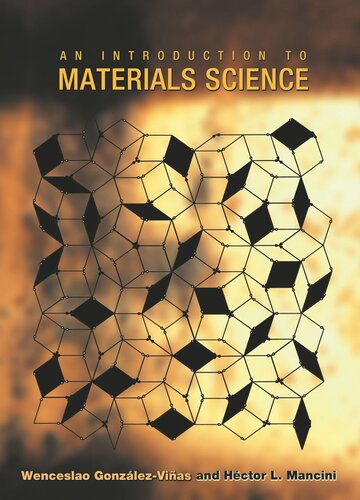

Most ebook files are in PDF format, so you can easily read them using various software such as Foxit Reader or directly on the Google Chrome browser.
Some ebook files are released by publishers in other formats such as .awz, .mobi, .epub, .fb2, etc. You may need to install specific software to read these formats on mobile/PC, such as Calibre.
Please read the tutorial at this link: https://ebookbell.com/faq
We offer FREE conversion to the popular formats you request; however, this may take some time. Therefore, right after payment, please email us, and we will try to provide the service as quickly as possible.
For some exceptional file formats or broken links (if any), please refrain from opening any disputes. Instead, email us first, and we will try to assist within a maximum of 6 hours.
EbookBell Team

4.4
62 reviewsMaterials science has undergone a revolutionary transformation in the past two decades. It is an interdisciplinary field that has grown out of chemistry, physics, biology, and engineering departments. In this book, González-Viñas and Mancini provide an introduction to the field, one that emphasizes a qualitative understanding of the subject, rather than an intensely mathematical one.
The book covers the topics usually treated in a first course on materials science, such as crystalline solids and defects. It describes the electrical, mechanical, and thermal properties of matter; the unique properties of dielectric and magnetic materials; the phenomenon of superconductivity; polymers; and optical and amorphous materials. More modern subjects, such as fullerenes, liquid crystals, and surface phenomena are also covered, and problems are included at the end of each chapter.
An Introduction to Materials Science is addressed to both undergraduate students with basic skills in chemistry and physics, and those who simply want to know more about the topics on which the book focuses.